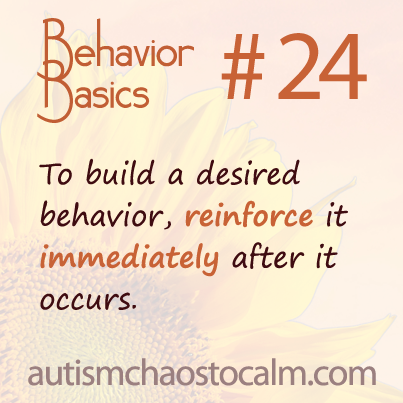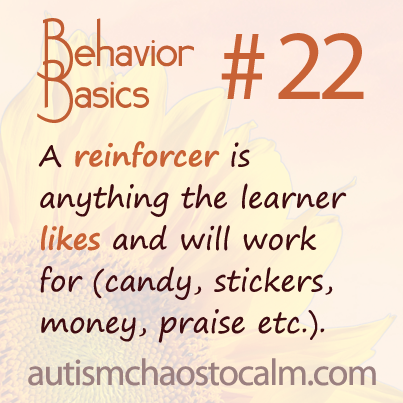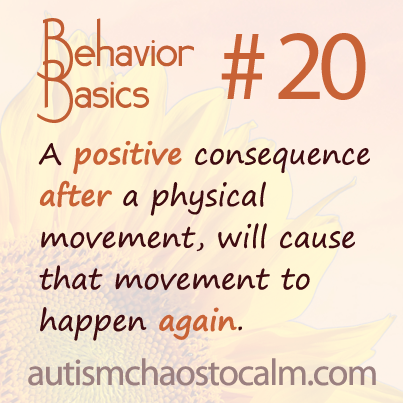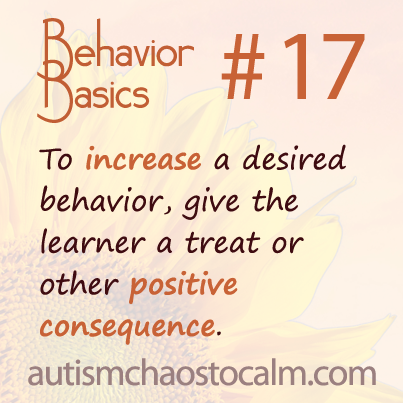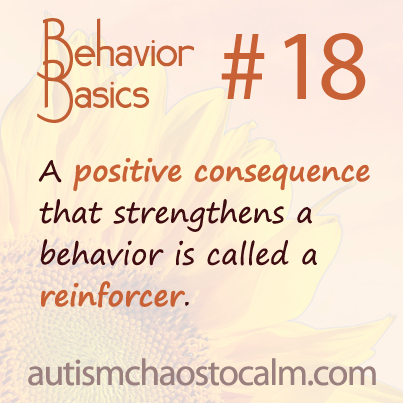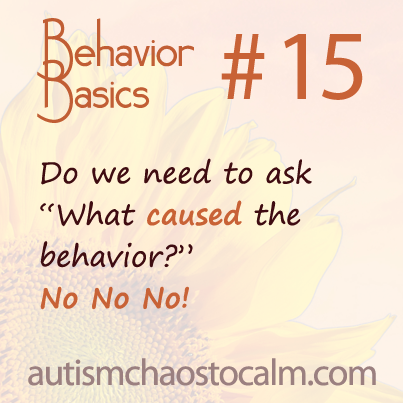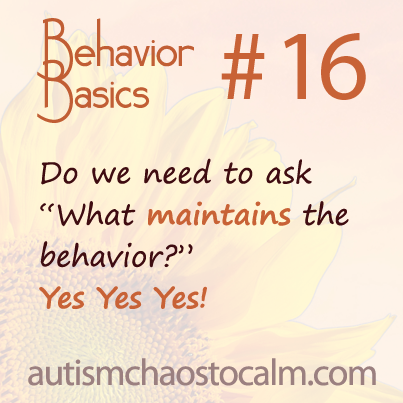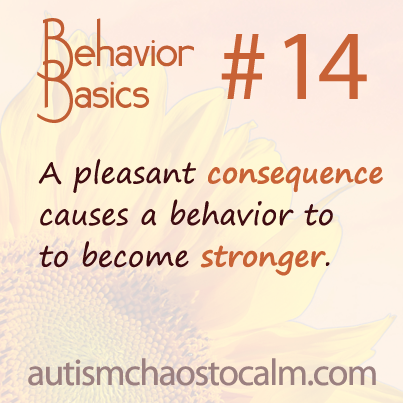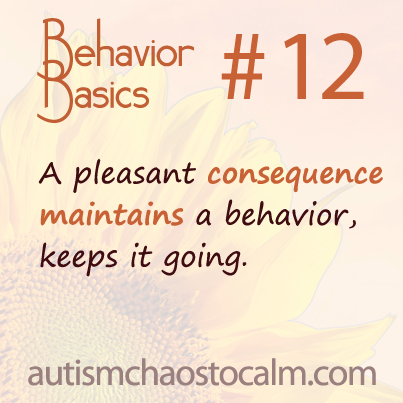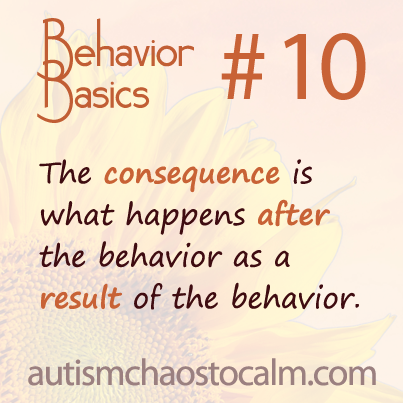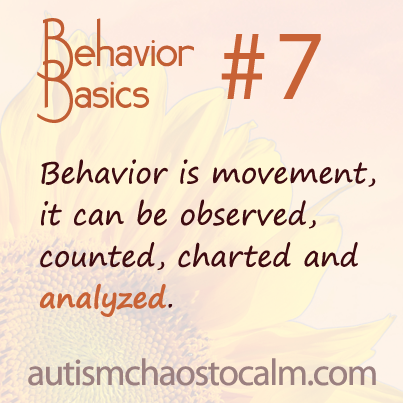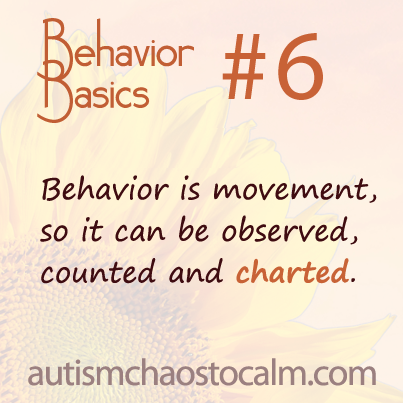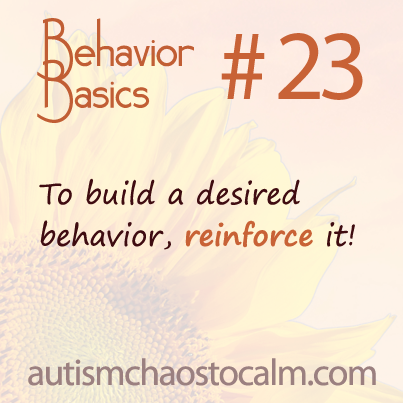 Behavior Basic #23. To build a desired behavior, reinforce it!
Behavior Basic #23. To build a desired behavior, reinforce it!
This is the core principle of Applied Behavior Analysis — the golden rule, the way of truth! When teaching, think of what you want the child to achieve (reading a sentence, setting the table, hanging up a coat). When the child performs that great behavior, reinforce it! Give him a treat, token, praise, appreciation, recognition, money, or anything pleasing The child will do that behavior again. When he does it again, reinforce it again! Reinforcement will result in that behavior becoming a routine activity for him. Then go on to the next step and build another great behavior.
Behavior Basid #24. To build a desired behavior, reinforce it immediately after it occurs.
We discussed how important it is to reinforce a behavior so that the child performs it again. But, there is an important detail to think about! When you reinforce the child, you have to do it right away! Reinforce as soon as she performs the behavior. When you reinforce right away, the child will know exactly what she has done that is right. Don’t dawdle or delay! Get in there right away and start handing out praise, thanks, treats, tokens, recognition, or whatever is pleasing to the learner. If you are late with the reinforcer, the child will be confused. What did she do to earn the treat? She won’t repeat the desired behavior and may repeat some other random behavior. The faster you are with immediate reinforcement, the faster the child will gain that great new skill.
REMINDER: This concludes the wrap-up of Behavior Basics for the week. Please remember the schedule: On the release date of each module, the Behavior Basics for that module will be compiled into a PDF ebook available from our blog and Facebook page. Click on this link to download the entire series of 42 Behavior Basics for free: http://statictab.com/m7bizwt.
